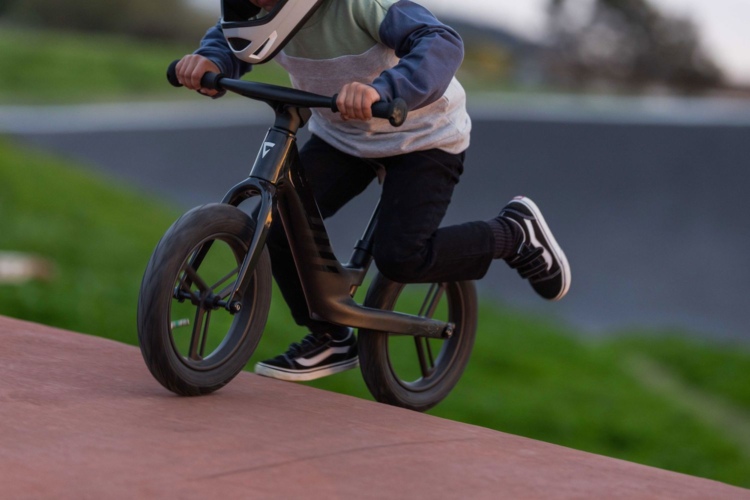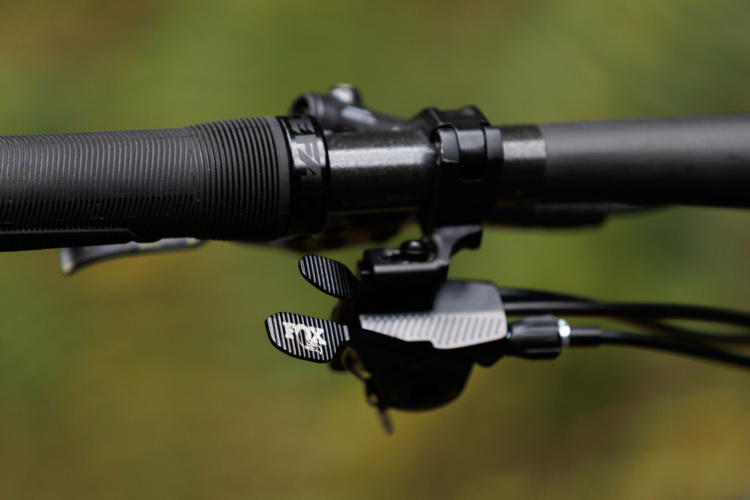
If you’re throwing your leg over a modern-day trail bike, chances are your trusty steed comes with adjustable geometry in the form of a “flip-chip.”
Flip-chips have been on bikes for quite some time now. Early flip-chips took a bike with bad geometry and made it, well, slightly less bad. But, as mountain bike technology progressed, and bike engineers and manufacturers dialed in the perfect geometry, we have seen more and more flip-chip bikes.
So the question becomes: why? Why in a world where frame geometry is near perfection do we see more companies offering flip-chip bikes? Does a flip-chip really make that much difference in geometry? Should you look to buy a bike with a flip-chip? Ultimately, are flip-chips just a mountain bike industry sales gimmick? I would argue, yes. Well, I mean, mostly…
Flip-Chip Cons
Adjustable geometry for real
While many bike manufacturers offer a frame with a flip-chip, only a few offer significant geometry adjustments. Bikes like the Stumpjumper Evo have an adjustable headset and a flip-chip at the axle, allowing a rider to slacken the head tube angle from 65.5 degrees all the way down to 63. Headset cups and the Mino-Link allow Trek’s new Fuel EX to change similarly. But many flip-chips only allow minor changes.
Santa Cruz, Specialized, YT, Alchemy, Intense — from big to boutique, direct-to-consumer to local bike shop staples — we’ve seen many brands jump on the flip-chip bandwagon. And just how much is flipping your chip changing your bike’s geo? Obviously, every bike is going to be a little different. With that said, typically a flip-chip will:
- Slacken or steepen your head tube angle by 0.5 degrees
- Slacken or steepen your seat tube angle by about the same
- Lengthen or shorten your wheelbase, reach, and BB height by a few millimeters
With nearly unnoticeable changes in geometry, it is sometimes a stretch to label a flip-chip as “adjustable geo.” Most often, the “adjustability” in the geometry of these flip-chip bikes is limited to half a degree and a few millimeters either way. Yes, you are adjusting your geometry, but is it enough to notice? Bike companies seem to think so.
Despite the geometry not changing very much, flip-chips also may affect a bike’s geometry in undesirable ways. A slacker headtube paired with a steeper seat tube seems to be the place frame geometry has landed. Changing a flip-chip often changes the headtube and seat tube angles together. Unless your bike has adjustable headset cups, you will usually slacken your seat tube along with your head tube.
“Flip-chip” doesn’t mean fast

I could also argue that the name alone, flip-chip, is a bit gimmicky. The title of this technology insinuates quickness and ease, with a rider seemingly being able to adjust their geo on the fly. Any owner of a bike with a flip-chip integrated into the frame would tell you that is usually not the case.
Most flip-chips are going to take 10 minutes to flip, if not longer. In most cases, changing your bike’s flip-chip from “high” to “low” is quite a process. First, you may have to let all the air out of your rear shock. Second, using an Allen wrench, remove the bolt that serves as the hardware for the flip-chip and shock. Next, remove the flip-chips themselves, and replace them flipped over (and sometimes on opposite sides) of the shock mount. Then, realign your rear triangle and shock to the shock mount to replace the bolt. Lastly, screw the bolt back in and air up your shock.
Without knowing this process, it could be easy to think that you can do your climb in the “high” setting, slackening your bike to “low” for your descent. Just flip the chip. I have never changed my flip-chip mid-ride nor have I seen anybody doing the same. I have no doubt that I would be putting dirty hardware back on my bike after dropping them in the dirt. Plus, I would end up with zero riding buddies. No one wants to hear, “hang on guys, I just need to switch my flip-chip. It’ll only be like 15 minutes…”
Oh, and hopefully you brought your shock pump and torque wrench with you.
Set it and forget it
Once a rider figures out the process involved with changing a flip-chip, and the minor geometry adjustments it makes, many end up not bothering with the flip-chip at all. While no bike company advertises their flip chip as “set it and forget it,” it seems that is often what happens.
A recent Singletracks poll showed that almost 40% of riders have never used their flip-chip. A meager 2% change their flip-chip a few times during the season and 16% switched it once and left it in that position.
Popular mountain bike forums are littered with flip-chip discussions where users show a common theme: they just don’t flip their chips. Whatever the reason, the reality is that this seemingly quick geo adjuster typically goes unused.
Flip-Chip Pros

It is adjusting geometry
Slackening a headtube angle half a degree or shortening the reach by a few millimeters certainly may not be that noticeable. The flip-chip on my Intense Primer changes the wheelbase a measly 1 millimeter from high to low along with an overall geometry change of 1° or less. It’s a millimeter I don’t notice.
Despite the seemingly insignificant numbers, a flip-chip is geometry adjustment nonetheless. And being able to dial in your bike’s ride feel is always a good thing. Reach is just a tad too long? Don’t buy a new stem, flip that chip! The bottom bracket is just a bit too low? Don’t buy shorter cranks. Flip the chip to the “high” setting, preventing those pedal strikes. There are times when those “insignificant” millimeters can actually amount to something.
Price
New products and “exclusive” technology are always going to drive costs up. The bike market is no different. Fortunately, we have seen bike company after bike company offer frames with flip-chip technology. With flip-chips becoming nearly as common on trail bikes as a dropper post, the cost is relatively stable.
Many companies offer complete bikes with flip-chips for under $4,000, which many consider the high end of a “budget” bike. And, if flip-chips are as gimmicky as they may seem, at least you didn’t have to pay top dollar for a bike with only one setting.
Maybe it’s the psychology of it all
Regardless, it looks like flip-chip technology is here to stay. Is it a gimmick? Yeah, pretty much, I’d argue. Will it change how you ride? No, probably not. With that said, I switched my Primer’s flip-chip to “low.” I can’t say I noticed a huge difference — or any at all. Yet, I kept it in the low setting. Maybe I started to feel more planted. Maybe I felt more “in the bike.” Maybe I felt more confident. Maybe.
Or, maybe, it was actually just all in my head. With slack, long, and low being the geo mantra, do I really notice a difference, or am I just thinking I do? Is it actually the change in geometry or is it my expectation being met?
Any opinions expressed in this article belong to the author alone, and do not necessarily represent the opinions of Singletracks.com.


















4 Comments
Feb 8, 2023
Feb 8, 2023
Feb 9, 2023
Feb 8, 2023
Cause everyone is exactly the same weight and physique!